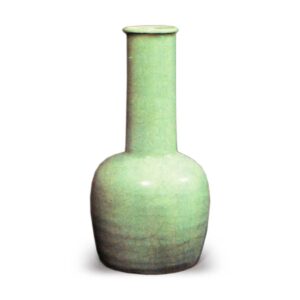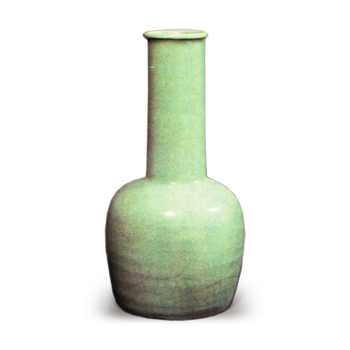
Kinuta celadon is a common name in Japan for a type of celadon produced at the Longquan kiln in Zhejiang Province, China. It is said to have originated from a story in the Keiki (the oldest surviving book in Japan) that Rikyu saw a crack in a certain orchid ear vase and fixed it with a piece of cloth, which he thought had a certain resonance. In any case, the word “keiki” has come to refer to all the powder-blue celadon wares made at the Longquan kilns during the Southern Song period. Incidentally, the term “Tianlongsi celadon” refers to wares from the late Southern Song to Yuan dynasties, while the term “Qiguan celadon” refers to Ming dynasty wares.



